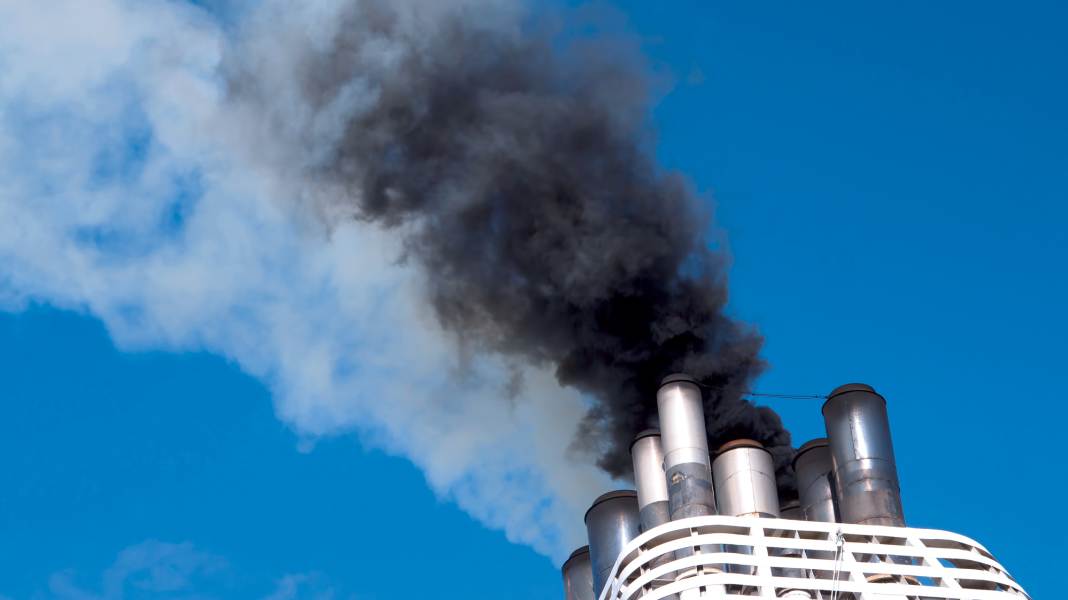
The EU ETS is easy to explain and is not actually a new political instrument. European climate policy has long been working towards all member states being climate-neutral by 2050 (net zero). The goal of the European Union (EU) is to reduce greenhouse gas emissions in the EU by at least 55 per cent by 2030 compared to 1990 levels. This is where the EU ETS comes in: European emissions trading (i.e. the EU Emissions Trading Scheme - known as the EU ETS) has been one of the EU's key climate protection instruments since 2005 and is particularly focussed on industry. The EU ETS is based on the so-called Greenhouse Gas Emission Allowance Directive and is intended to work towards a cost-effective reduction in greenhouse gas emissions.
More on the topic:
The basic idea of the ETS
In this way, the EU's stated goal - climate neutrality - and thus a goal of the Paris Agreement on climate change is to be achieved. The basic idea behind the ETS is actually of an economic nature. With the political will and the need to stop climate change, the realisation is gaining ground that the impact on environmental resources is only possible to a limited extent and that the right to impact is therefore to be regarded as intrinsically valuable. If permitted pollution limits fall, the price of the right to pollute rises - this lays the foundation for the EU ETS as a socio-political instrument. CO2 emissions are priced or traded with the right to emit a certain amount of CO2.
Would you like some more detailed information? The EU ETS is based on the cap and trade system: an annually decreasing upper limit (cap) is used to determine the total amount of greenhouse gas emissions that may be emitted by the affected installations. Taking this cap into account, the member states issue a certain number of emission allowances, which can either be auctioned or purchased by the affected parties on the EU carbon market. The allowances can be freely traded, resulting in a price for the emission of greenhouse gases. The rising price of CO2 is intended to make it economically attractive to (further) reduce greenhouse gas emissions and thus make a decisive contribution to achieving the climate targets. According to the EU Commission, for example, this system has now led to a 37 per cent reduction in emissions from power plants.
EU ETS in yachting - what's new?
Intra-European aviation has been subject to the EU ETS since 2012. An amendment to the Greenhouse Gas Emission Allowance Directive from June 2023 now stipulates that the EU ETS will also apply to greenhouse gas emissions from maritime and shipping transport from 1 January 2024. You may now be wondering whether you are also affected. First of all, we would like to emphasise the importance of emissions at sea for the European climate targets: Shipping is responsible for around four per cent of all greenhouse gas emissions in the EU. And the trend is rising. The maritime sector is the sector with the fastest rising greenhouse gas emissions in Europe. This is mainly due to the increase in the volume of international trade by sea, but yachts, whose average size has been steadily increasing for years, certainly also play a role.
What do these figures and trends mean for achieving the climate targets? In fact, the emissions caused by ships will have to fall by two per cent in 2025 and by 80 per cent in 2050 compared to 2020 (!). In concrete terms, this means that from 2025 - with decreasing emission allowances - 40 per cent of the greenhouse gases emitted in 2024 that fall within the scope of these regulations must be covered by emission allowances. In 2026, the value will be increased to 70 per cent of the greenhouse gases emitted for 2025. Finally, from 2027, 100 per cent of the greenhouse gases emitted for 2026 and each subsequent year must be certified.
Does your yacht fall within the scope of the EU ETS?
To answer the crucial question of the EU ETS, you need to know the following background: In 2023, in addition to the fundamental extension of the EU ETS to shipping, a regulation dating back to 2015, the so-called EU Maritime Transport Regulation, was also amended. This regulation is also key, as it provides information on the scope of application of the EU ETS regulations. The EU MRV Maritime Transport Regulation now applies to ships and yachts with a gross tonnage of 5000 or more (i.e. 5000 gross tonnes). This means that most existing yachts are still excluded from the scope of the EU ETS for the time being. However, the question is when the scope of application will be extended again.
So how does the EU ETS work for the yachts that actually fall within the (still) narrow scope of application? For the purposes of emissions trading, the emissions are measured and priced: "released during voyages for the commercial transport of goods or passengers from the last port of call of these ships to another port of call in the territory of a Member State to the next port of call and during the stay in a port of call in the territory of a Member State."
The geographical application of the regulations is also regulated in detail - a paradise for bureaucrats. The EU ETS covers ships travelling between ports of two Member States, ships travelling from an EU port to a non-EU port, and vice versa. The difference is that for journeys between two EU ports, allowances must be purchased for 100 per cent of the emissions, and for journeys from or to just one EU port, only 50 per cent of the emissions. Quiz question: What about emissions caused by a ship in an EU port? Correct, 100 per cent of these must be offset by purchasing certificates.
The new significance of commercial use
Based on the above provisions, the question of the use of a ship for "commercial transport", i.e. for commercial purposes (commercial purpose), is of crucial importance. What is a commercial purpose and when can it be assumed? Firstly, the term "commercial purpose" is a term that arises in connection with the registration of a yacht. For example, yachts are often registered as "commercial" if they are used in a commercial charter operation. The specific requirements depend on the place of registration. Does commercial chartering mean that certificates must automatically be purchased for the greenhouse gas emissions caused?
The extension of the EU ETS to maritime transport and the considerations underlying the EU ETS suggest this. And yet it depends on the individual case. The decisive factor here is how the term "commercial purpose" is to be interpreted. Unfortunately, there is no universal definition of this term. Some examples are given that no longer fall under the term commercial purpose. The considerations in the EU Maritime Transport Regulation seem downright funny if you try to apply them to a large yacht. So it says:
"[...] it should not specify monitoring, reporting and inspection requirements for ship movements and activities other than the commercial transport of goods or passengers, such as dredging, ice-breaking, pipe-laying or offshore installation activities."
Now, a superyacht will probably only rarely be used for such purposes; commercially used superyachts are therefore at least not excluded from the scope of the EU ETS from the outset. But does this automatically bring them within the scope of application?
When chartering out a ship, it is obvious that this is done primarily to make a profit, which in turn would correspond to a commercial purpose. However, this is not clearly defined. The European legislator merely limits itself to stating that ships used for non-commercial purposes do not fall within the scope of the EU MRV Maritime Transport Regulation. It is therefore becoming apparent that the question of the intention to make a profit from the activity undertaken with the yacht will be of considerable importance in the course of the upcoming demarcation. Further interpretative guidance can be derived from the definition of cruise ships and commercial aviation.
However, it is still unclear whether the distinctions made here can also be applied to yachts. Ultimately, each individual case will have to be assessed. What is certain is that anyone who wants to avoid stumbling across the EU ETS when registering their large yacht commercially should consider this issue promptly.
EU-ETS is currently only a development on the horizon for large parts of the yacht market. It remains to be seen how smaller yachts will be included in the future. The current political discussions in the transport sector suggest that further developments could be imminent. So it remains exciting.
Experts for all questions of yacht law

The yacht lawyers Dr Tim Schommer (tim.schommer@clydeco.com) and Dr Volker Lücke (volker.luecke@clydeco.com) have been advising yacht clients from Germany and abroad for over 18 years. They advise on the planning and construction phase, the purchase and sale, the owner structure, yacht operation including insurance, crewing and charter as well as the handling of damage and third-party claims.

